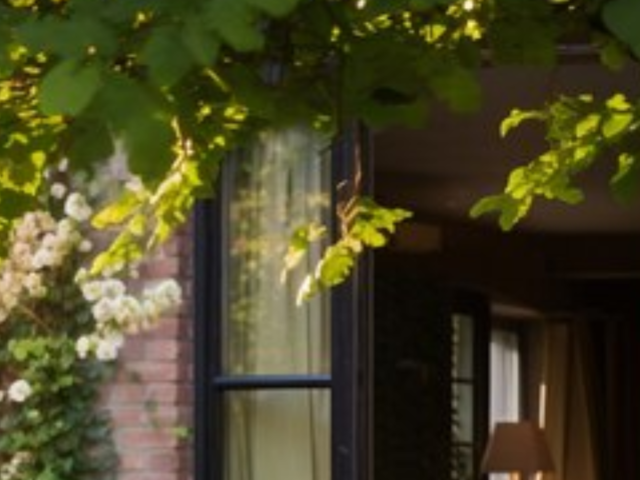
Representative imageCanva
Here's how organisations and agencies are preparing for this new world order
Mar 2, 2021, 22:56 IST
ad-agencies
How are Indian organisations and agencies redesigning their office spaces for a post-COVID world
Mar 2, 2021, 22:56 IST
Here's how organisations and agencies are preparing for this new world order
- The pandemic has completely changed how and where we work, forcing companies to be more flexible and to imbibe contemporary ways of working.
- As businesses seek to return to some form of pre-Covid buoyancy and start to think about the right mix of work-from-home and work-from-office, they can't just return to their former workplaces without reimagining the experience in its entirety for employees.
- At some point, companies will have to go back to their office and collaborate physically.
- So, as companies rethink workspace design for a post-COVID world, we reached out to a few design experts to understand how the concept of workspaces has changed after COVID-19 and what the future offices would look like once we resume normalcy.
A year later, we are used to working from home in our pajamas and jumping from one Zoom call to another has become our daily routine. We will soon have to bid adieu to many privileges that work-from-home has offered us and a recent rant by Instagram user Harjas Sethi highlighted these advantages of working remotely. Her video quickly went viral for its highly relatable content. Even organisations have realised that the lockdown was a boon in a way of demonstrating that remote working can be a success as it reduces capital and operational costs.
However, with the roll-out of the COVID vaccine and a dip in infection rate than before, many organisations have started slowly returning to offices and some have started planning to make their environment more comfortable and safe for their employees when they do return to work at full occupancy. Businesses are trying to figure out the right balance between work from home and office. The traditional approach of everyone having their own desk is now gone, perhaps forever.
How organisations and agencies are preparing for this new world order
With vaccines being rolled out later this year, companies are planning to combine work-from-home and work-from-office to make the future of the workplace hybrid.
Kiran Khadke, Co-Founder & Creative Head of Hyper Connect Asia has made up his mind about adopting a hybrid-model post-pandemic. He said, “We are actually rethinking the way we would conduct our office. The whole WFH situation made us realize that a lot of things can be managed over a video call. So in the times to come, we plan to work on a hybrid model, where not everyone has to come to the office every day. Teams will have to plan their office meets, to align crucial projects and then they can WFH Considering this, we will have a flexible office structure with more conference rooms, spaces for collaboration and no fixed workstations. With that, we are also getting our tech upgraded to be able to work from anywhere.”
Shashwat Das of Almond Branding helped us look at the brighter side of 2020. He had always dreamt of running a location-independent business, where his employees can work remotely from anywhere in the world as long as they are connected virtually, and his dream seems more achievable now.
He said, “Earlier, one of the purposes of an office was access to shared infrastructure like computers, printers, xerox machines, etc. Now with documents moving to cloud with secured access, the focus shifts to building social bonds, foster corporate culture and host clients. While the trend of paperless offices was just picking up, the pandemic has fast tracked the transformation by leaps and bounds. Some of our traditional style working clients, who would otherwise insist on an invoice hardcopy citing audit reasons, have now become comfortable with e-invoices. That’s such a good news for us and mother earth. I think work from anywhere rather than WFH will be the future.”
Rethinking design for open space offices and co-working spaces
Even if employees do go to the office for 3 days a week, businesses can't just return to their former workplaces without reimagining the experience in its entirety for employees. Co-working spaces have already taken a hit as employees don’t feel safe sharing desks and common areas with unknown people as they used to do earlier.
Before COVID, the advertising industry had the culture of working out of open spaces. There are many Indian agencies like Leo Burnett, 82.5 Communications who didn't believe in having glasses and closed spaces in their offices. However, to facilitate social distancing, it is now important to rethink interiors of our offices and add more walls. So, how should they go about redesigning their offices?
Ashwini Deshpande, Co-founder & Director, Elephant Design, answered,“It is very difficult for me to visualize how people work in cubicles or glass spaces inside tall towers. We chose to work out of Pune for better quality of life and air. Our studios are spread across two bungalows and an open space in-between. We have a casual outdoor cafe and many other outdoor nooks. No matter where you are working, an open outdoor space with greenery and wifi is always a few steps away. Agencies should move to open spaces outside Mumbai. This may sound radical, but going back to my earlier point, companies need to create spaces just for those activities that need to be done together and not for anything that is perfectly done remote.”
What should the offices of future look like
Following the pandemic, new considerations have come to light. The future of work will be new: environment-friendly, technologically-advanced and inclusive.
Telling us what the
Businesses are being advised to transfer physical records that dominate the workspace onto a digital cloud and rethink furniture that can prevent safe social distancing.
Apart from altering physical social-gathering spaces like buffet sections and conference rooms, designing is also about developing a future-ready organisation that isn’t just about the physical space. Businesses need to apply design thinking into their daily operations to build a great working environment and connect office design to brand.
After COVID, according to Lulu Raghavan, Managing Director, Landor & Fitch India, the most progressive businesses will be thinking about the six imperatives of Workspace Design: culture, interaction, function, sustainability, architecture and technology.
Raghavan said, “Workspace design is a deeper discipline and mindset that connects office design to brand. It dictates the journey, the overall experience and ensures that the brand’s values and function are reflected in the physical, human and digital space, much like retail. A well thought-through strategy on Workspace Design could help businesses to forge stronger relationships with their employees who in turn will become great brand ambassadors.”
As uncertainty still continues to haunt our office corridors and our open-desks, it will be a challenge for companies to continue to foster their corporate culture and practices like employee training and development.
Puneet Pandey, Strategy Head and Managing Partner, Open Strategy and Design said the element of uncertainty has been the biggest challenge that the pandemic imposed on our deeply inter-connected worlds.
Pandey said, “Creating ‘physically distanced cohesion’ is going to be the trickiest problem to solve for business leaders in their organisations. Especially now that we are already a year into the post-pandemic world. There will be newer teams and newer expected behaviours and a whole lot of social tentativeness to punctuate an otherwise seamless flow of interactions inside our work-cultures. A sharply defined and well-designed internal culture acts as the internal compass and a vital behaviour guide, that make us hive-creatures continue to create and build even in the face of tentativeness Going forward, while organisations rethink their physical/virtual workspaces, leaders will place a lot more emphasis on communicating sharply defined cultural values within their organisation. This ‘cultural software’ will be key in ensuring predictable and productive outcomes possible in the coming times. "
There will still be room for Zoom calls and virtual brainstorming sessions.
Khadke said, “The future of offices should purely be a place to collaborate, to overcome the challenges that we face while working online. It may no longer be an everyday thing. Every aspect of the office (Design, Furniture, Tech, Facilities etc.) will be defined around this.”
Using new technologies to facilitate social-distancing will be one of the key goals for organisations rethinking their workspace design.
Das said, “Post the pandemic, hygiene considerations reign high and touch-free technology is going to become increasingly important in workspaces. Companies are re-imagining elevator designs and security access. They may also adopt a health screening process at the security gates. As more companies adopt the concept of remote working, decentralisation is an eventuality. Instead of asking everyone to travel to a single headquarter building, companies will have satellite offices or hubs that allow employees greater flexibility and choice. Simple practices like more frequent and visible cleaning schedules might contribute to a feeling of safety. Air-filters are getting installed in offices and regular air-quality assessments will become more important.”
Experts said that the future-workspace design needs to be flexible enough to quickly adopt to meet tenant needs. Modularised designs will help in managing fluctuations in employee strength and technology will play an increasingly critical role in offices of tomorrow.
INSIDER INTELLIGENCE REPORTS







